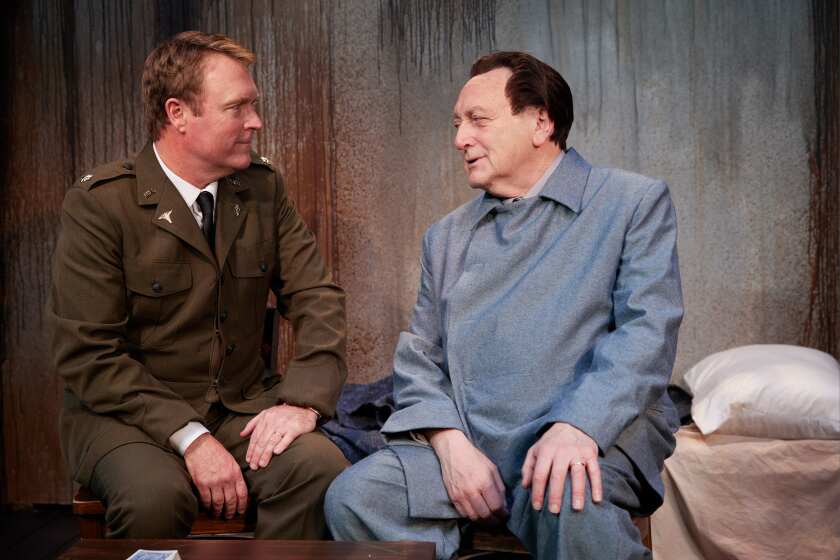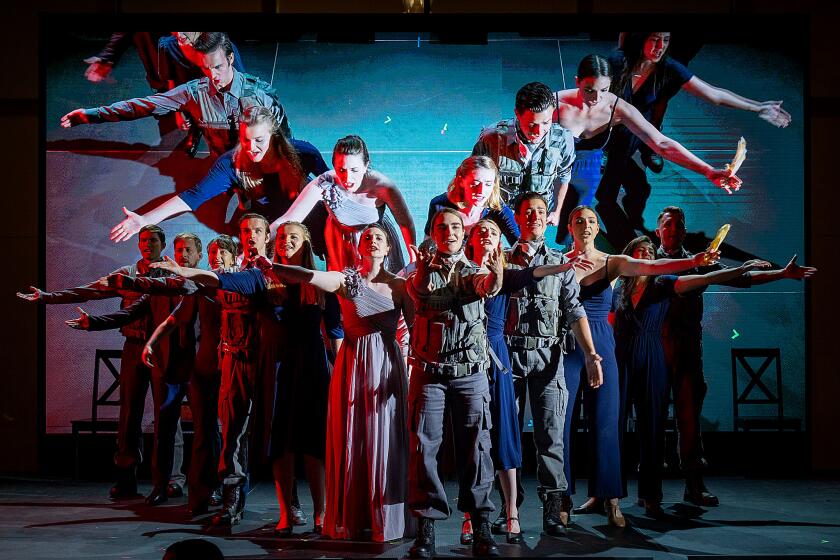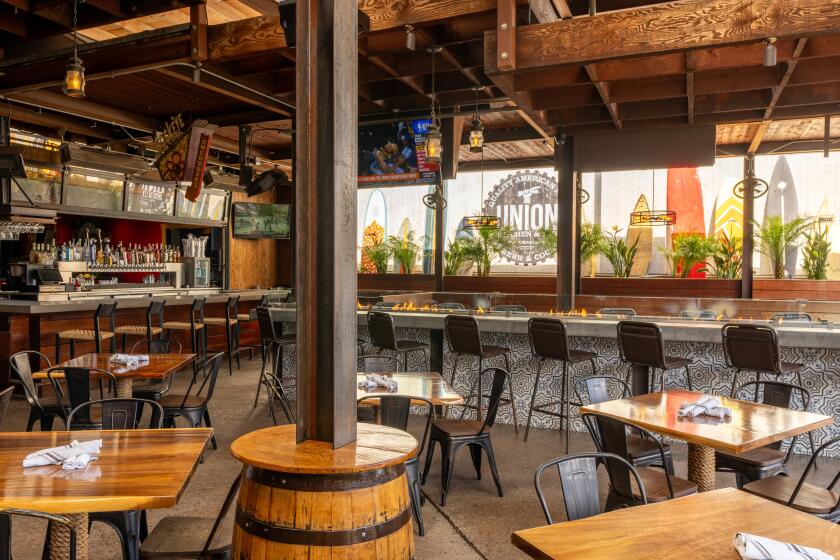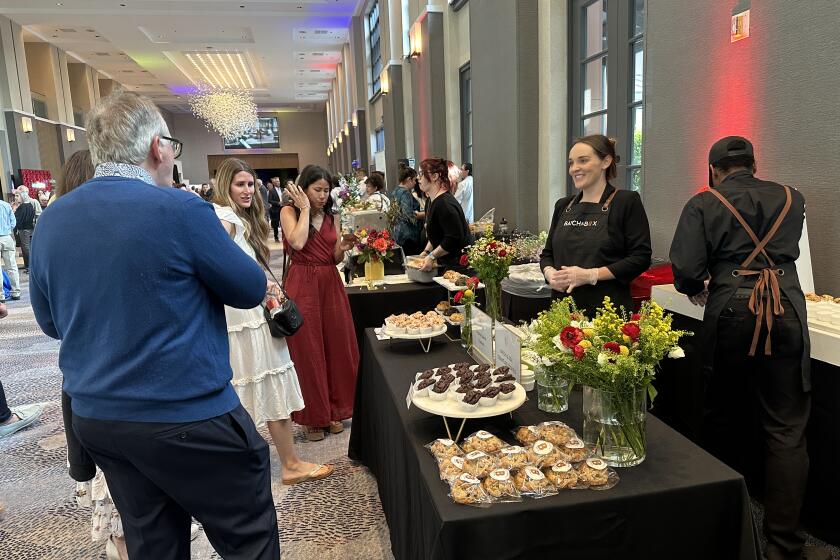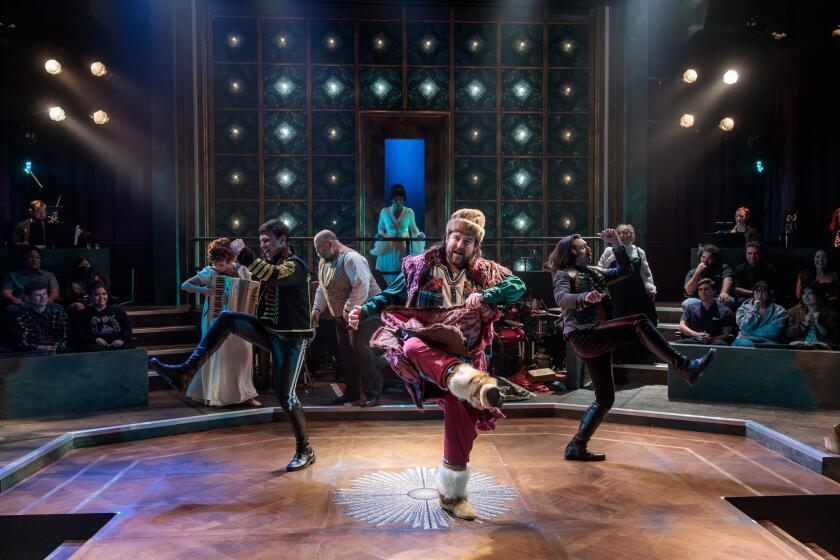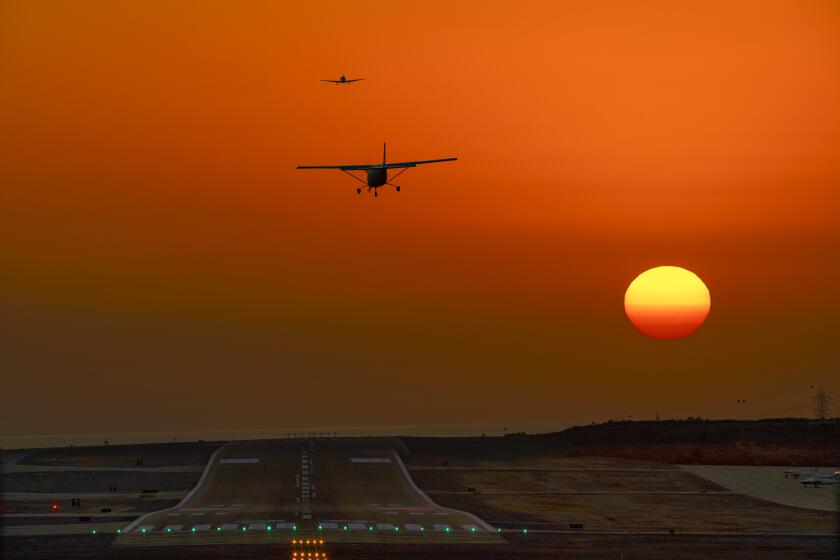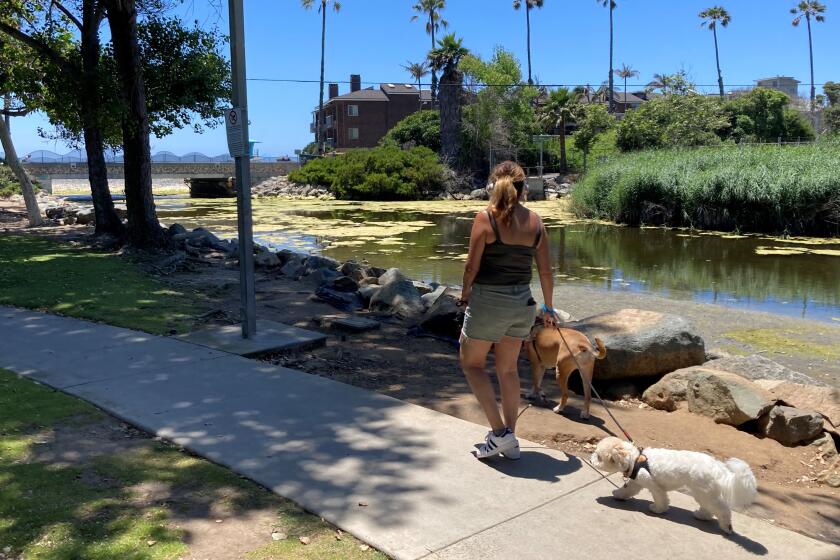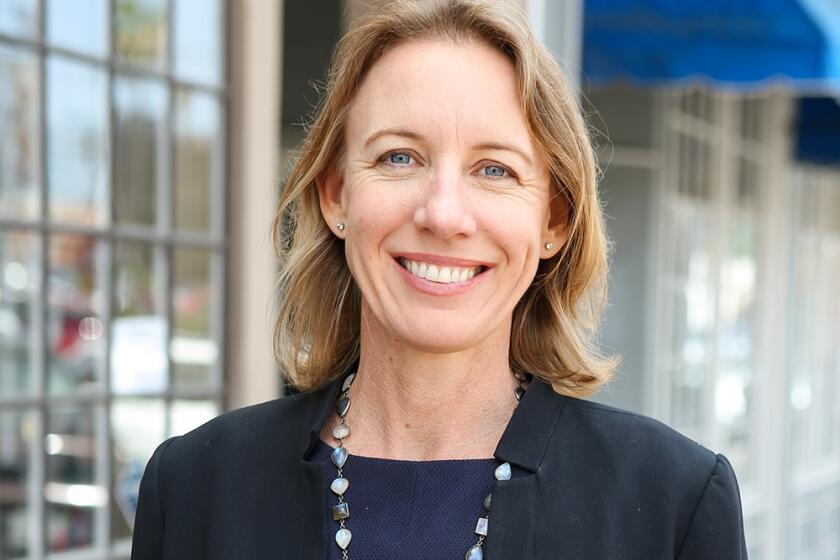Cycling team to roll into Ironman history
Many athletes competing this Saturday in the Oceanside Ironman 70.3 are likely to achieve a personal best. But odds are only two men in the triathlon will be making history.
Carlsbad quadriplegic Lance Weir, 45, and his able-bodied riding partner Parker Berling, 33, are set to become the first tandem hand-cycling team to ever compete in an Ironman event.
The two men are part of a three-member team fielded by the Challenged Athletes Foundation. Weir and Berling will complete the race’s 56-mile cycling portion. The 1.2-mile swim and 13.1-mile run portions will be finished by retired Army Col. Patricia Collins, who is a below-the-knee amputee.
This weekend’s Ironman “first” is just the latest sports accomplishment for Weir, who has been racking up one achievement after another in cycling, shooting and skiing since 2011.
He and Berling, a San Francisco resident, led the first challenged athlete team in Nevada’s Silver State 508-mile bike race; he’s ridden from San Francisco to San Diego six years in a row for CAF; and the U.S. Olympics Committee selected him as an “emerging shooter” for its Paralympics’ air rifle shooting team.
In the 24 years since a near-fatal accident that paralyzed him from the chest down, Weir has overcome numerous health and personal challenges. So he says having the strength and support crew behind him to set new sports records is like the icing on an oversize cake.
“Anything from here on is just gravy,” Weir said. “What I tell kids when I speak to them is that you’re always going to face adversity and it will happen many times in your life. It’s not how many times you face adversity and go down; It’s how many times you get back up. I’m still awed by all of it.”
Weir grew up in Walnut Ridge Ark., where he joined the Marines as a reservist when the Gulf War began in 1990. The six-month conflict ended before he ever made it out of infantry school at Camp Pendleton, but he was planning for a career in the military after college.
Then one day while canoeing down the Spring River rapids near his home, he dropped into the water to retrieve his ballcap, which had sunk to the riverbed. Halfway down, he struck his head on a rock with such force that his C-5 vertebra exploded.
“I was conscious and face down in the water and I can remember thinking how beautiful the river was. Then I saw blood circling around me in the water,” he said.
Another canoeist pulled Weir out of the water before he drowned, but he was on life support for days because of water in his lungs and the extent of his spine injury.
The accident left him paralyzed below the armpits, with only limited mobility in his arms. After rehabilitation, he moved back to his Arkansas hometown where there were no jobs or support services for him.
“As much as I loved my home, it was a tough place to go back to with such a severe injury,” he said. “I found myself stuck in that dark apartment . Before I knew it, it wasn’t just the months that were passing, whole years were passing me by.”
The clouds began to lift about four years later when he was invited for some training at a spinal cord injury center in Colorado. There he saw patients with more severe injuries, like a 16-year-old boy on a ventilator who couldn’t even brush away a fly that landed on his nose.
“It just changed me,” Weir said. “I figured, I can move my arms some. There’s no way I should be feeling sorry for myself any longer.”
Over the next several years, he learned to drive an adapted van, earned a college degree and got his first service dog from Oceanside’s Canine Companions for Independence (CCI).
In 2006, Canine Companions hired him as a veterans liaison and he moved to North County. With a full-time job he loved, his black Labrador Satine by his side and Southern California’s unbeatable weather, Weir said he didn’t think things could get much better.
Then in 2008, he met Nico Marcolongo, a fellow Marine veteran who oversees CAF’s Operation Rebound program for disabled vets. Marcolongo said it took a while to convince Weir to try some sports programs but he was impressed with Weir from day one.
“He’s a genteel man, very humble, very grateful for the opportunities he’s receiving and he sets an example for others to follow,” Marcolongo said. “His perspective on what one can and can’t do has changed. It has really opened his eyes and he likes to share that with others.”
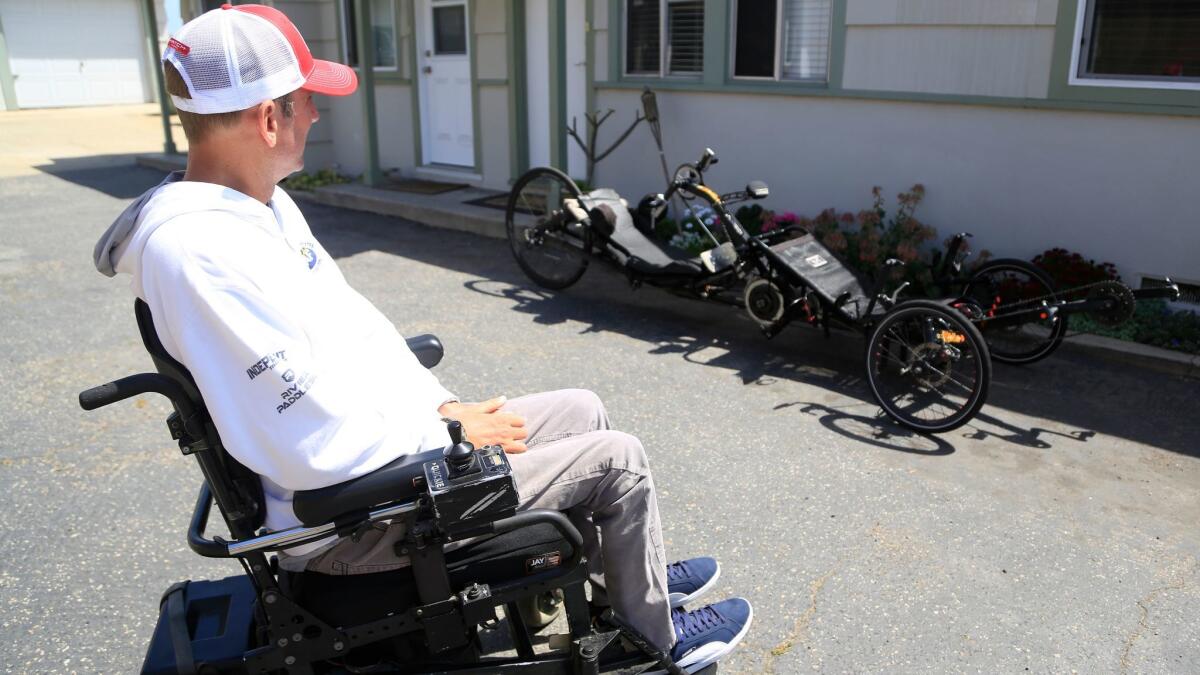
In 2011, Marcolongo convinced Weir to reconnect with his military roots by competing at the Marine Corps Trials, a competition to field the base’s 50-member team for the Warrior Games (a military version of the Paralympics).
Weir didn’t have the arm strength or mobility at the time to do the two sports he liked — archery and hand-cycling — so he gave up and just attended the trials as a spectator. Then about five days in, he discovered the air rifle competition.
He did so well with an adapted gun that he earned third place in the contest as well as a spot at the 2011 Warrior Games in Colorado, where he earned gold and silver medals. After medaling again in 2012, Weir returned to the Warrior Games in 2013 as one of the rifle team’s coaches.
He could’ve gone on to the Paralympics, as well, but the cost of training and traveling was too high, so he opted instead to try adaptive skiing and hand-cycling, at Marcolongo’s suggestion.
Every year since, Weir has competed in CAF’s Million Dollar Challenge, a 620-mile, seven-day fundraising bike ride down the California coast. Riding with Berling and other partners, he competes on a specially modified recumbent tandem bike where he sits in back turning a wheel-like crank, mostly through shoulder movements that guide his arms and hands. Other team members follow on their own bikes, occasionally pushing the tandem from behind via handrails.
Those rides were a good warm-up for the 2015 Silver State 508, a 508-mile race across Nevada in just 48 hours that Weir described as the hardest thing he’s ever endured since recovering from his injury.
For that race, he and Berling assembled a six-member team that included Paralympian David Lee of Cardiff, a paraplegic and champion hand-cyclist, who switched off with Weir every six hours.
After that grueling race, Weir ended up in the hospital with infections that required three months of antibiotics. While there, doctors found a polyp and he underwent surgery to remove more than two feet of his small intestines.
Fortunately, the polyp wasn’t cancerous but his health worries weren’t over. Last year, he faced another serious infection in his hipbone that kept him home, in bed and on strong antibiotics for months. The infection finally cleared six months ago and now he’s back to enjoying life again with his second service dog, Auggie, an 8-year-old black Labrador.
In a few months, Weir will take delivery of a new heavy-duty titanium tandem bike being designed by mechanical engineering students at UCSD. He and Berling hope to break it in with a ride from the Canadian border south to Mexico.
It’s sure to be a difficult trek, but Weir said he now approaches every new challenge with the advice he received years ago on a Million Dollar Challenge ride from Bill Walton, the NBA Hall of Famer and an avid cyclist.
Walton, who lives in San Diego and is a longtime CAF supporter, overheard Weir and his partner struggling to figure out when and where to start each day’s ride with the tandem bike, which was prone to breakdowns.
“I remember seeing his face and he looked bewildered,” Weir said. “He said ‘you’ll never be able to finish if you don’t start.’ Now that’s become my mantra in life. I’m way more afraid of not starting than I am of not finishing.”
Get North County news in your inbox
Top stories from the San Diego North County every Monday, Wednesday, and Friday.
You may occasionally receive promotional content from the San Diego Union-Tribune.

